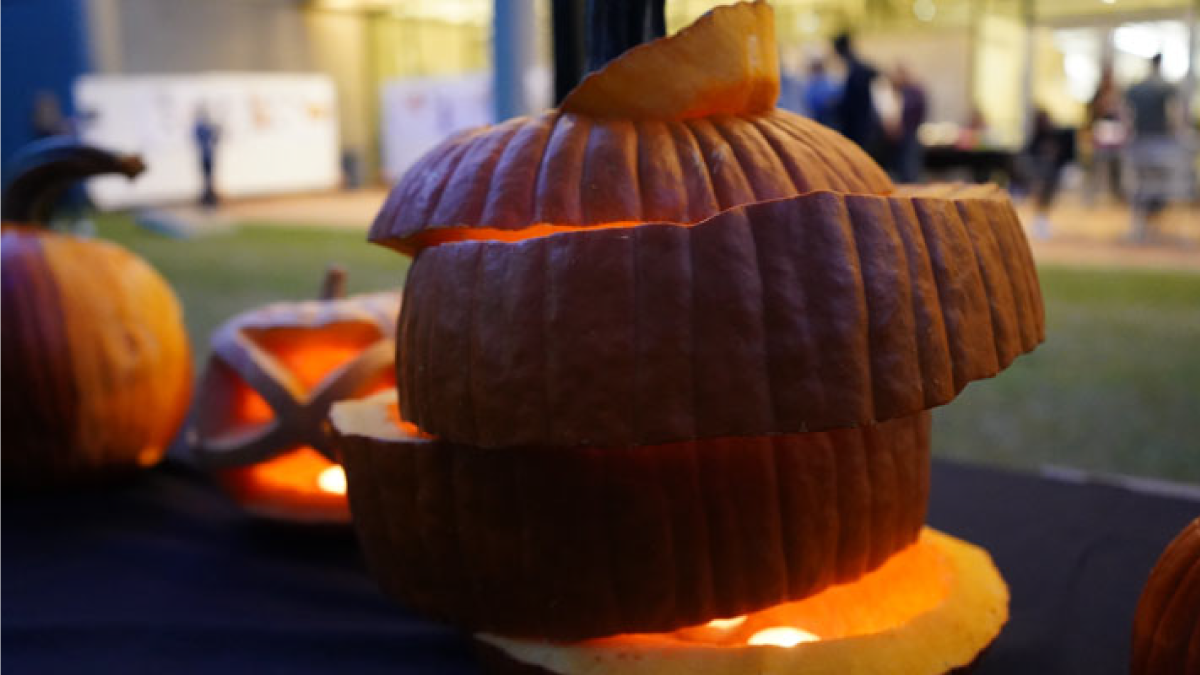
Exploring the 100-year Old Spirit of Bauhaus Through Pumpkins
By: Alejandra Nash | Photo Credit: Alejandra Nash
When you think of pumpkins, you probably think of fall decorations, pies, lattes, and Halloween. There are many beloved pumpkin applications, but how about a Bauhaus class project?
Leave it to the Georgia Tech School of Industrial Design to creatively prove that a week with messy pumpkins is a fun and memorable design lesson that celebrates unexpected materials and their potential. This year, to commemorate 100 years of the renown German art school Bauhaus, the pumpkin exploration featured 10 acclaimed Bauhaus alumni, designers, and peers of Hin Bredendieck – the School’s premier advocate.
“Exploring designers from Bauhaus and its connection to our history is really important,” said the School’s Undergraduate Program Coordinator and Senior Lecturer, Kevin Shankwiler.
As founding director of Georgia Tech’s industrial design program in 1952 and for the following 18 years, Bredendieck’s legacy, influence, and Bauhaus-inspired design approach created Atlanta's and Tech’s first industrial design professionals.
“Bauhaus really created design education in many ways and was the beginning of the study of industrial design from an academic standpoint," said Shankwiler, also an alum of the School. "So many of the techniques and design approach taught at the Bauhaus came over to Georgia Tech thanks to Hin Bredendieck, and are still how we teach design education today."
This year marks the fourth Annual Pumpkin Ramble, a unique week of exploration during fall semester for first-year industrial design students. The eventful showcase features pumpkins turned into spirited lanterns inspired by the study of influential designers.
Then and Now: Teaching Bauhaus Like No Other Program
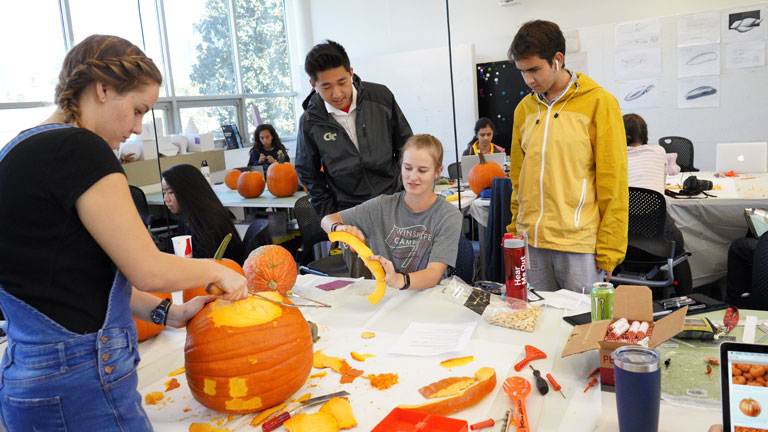
From Marianne Brandt, known for her metalwork in common household objects, to Marcel Breuer, renowned for his furniture designs, the Bauhaus inspiration coming to life for student exploration was representative of success and creativity.
As the students studied distinguished Bauhaus alums for this year’s pumpkin design blitz, they were tasked to interpret the designers and their work by using a pumpkin. This lesson specifically challenges students' design approaches.
Studying and researching Bauhaus designers emphasizes techniques and discovery, Shankwiler said, as well as the ways students are highly influenced by other factors as they work.
One example of this influence is immersive mood-setting, he said. This type of “all-in” exploration approach of materials and techniques is common in the School, where students are encouraged to learn and explore outside their comfort zones. The week-long pumpkin design blitz class teaches students the importance of canvassing their world with infinite design techniques and ideas.
At Georgia Tech, Bredendieck taught design as a science during his years shaping the industrial design program. His approach gave students a methodical approach to design that included research, ideation, iteration, material analysis, technique application, and tool exploration.
With this same methodology in mind, students participating in the pumpkin design blitz studied and embodied the designers for inspiration, creating inspiration boards that synthesized the designer’s work and background.
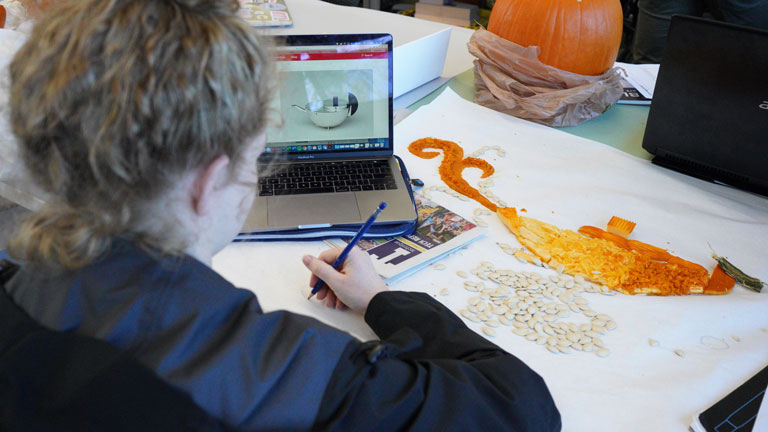
For first-year student Tynan Purdy, the rich ties to the visionary and innovative Bauhaus make his major at Georgia Tech even more unique.
“I think it's really cool. The field of industrial design is relatively new and it’s awesome that we’re able to actually pinpoint the place that started all of this. The fact that we can tie it back to the Bauhaus is cool enough, but the fact they we’re directly connected to it through the school’s founder makes it even better,” he said.
From Bredendieck’s design education to his design teachings, Bauhaus’ impact is extensive, and Bredendieck’s approach to design is materialized every day throughout many industrial design projects at Georgia Tech.
Pumpkin Exploration: Student Outcomes
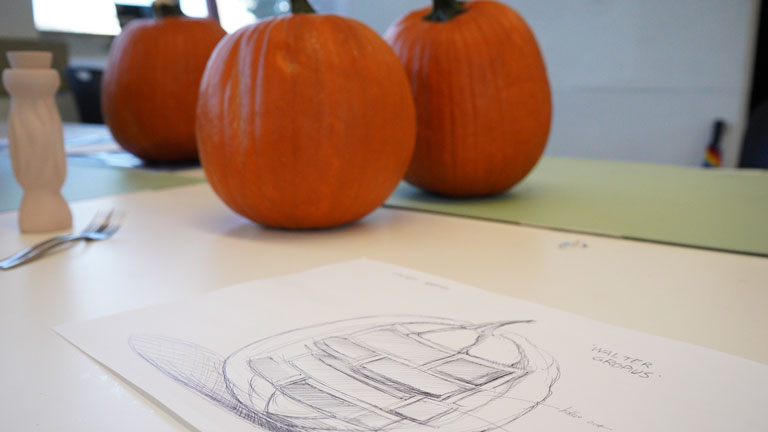
During the two full-days of pumpkin exploration, students worked closely with their teams and dove right into exploring pumpkins. Part of the challenge was learning how to dominate the different shapes, forms, colors, and textures of a pumpkin – and no two pumpkins are the same.
School of Industrial Design lecturer Yaling Liu said she's learned a lot about pumpkins herself by leading the pumpkin design blitz.
“Most of day one is about understanding the pumpkin itself, as well as the designer. Students have to be open to assimilating the designer’s work and design elements to find inspiration that they can then translate onto the pumpkin,” Liu said.
From Google searches, to countless sketches and piles of pumpkin guts, groups iterated various ideas and completed their inspiration boards to pin up for the pumpkin showcase. When students returned to studio early on Pumpkin Ramble day, groups enthusiastically showed their new pumpkins, and their orange canvas without hesitation.
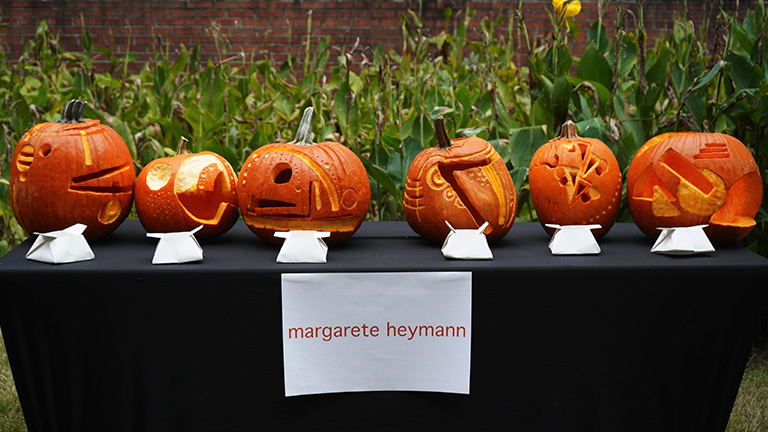
For first-year student Jocelyn Jagrowski, pumpkins proved to be a challenging design material, but the fast-paced nature of the project was equally challenging.
“We usually have multiple weeks to prep for projects, but for this one, it was all about being efficient and learning the material and designer right away,” Jagrowski said.
“I think the rest was up to our interpretation. I approached it first with the question, 'should I interpret the designer literally, or should I abstract it,' and ideas flowed. I feel like we got to experience a form of fast-iteration and I liked the challenge of having less time to ruminate,” she said.
4th Annual Pumpkin Ramble
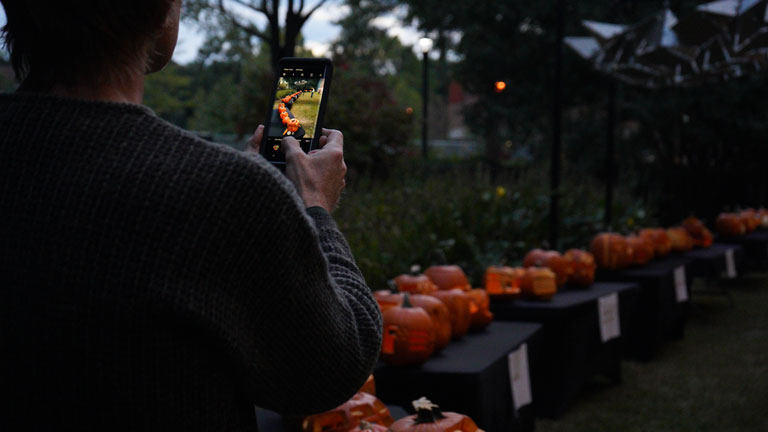
As evening fell on the last day of the design blitz, students' pumpkins were ready to showcase on the Architecture West Lawn. The Industrial Designers Society of America (IDSA) student chapter provided snacks and games for spectators and supporters, and welcomed all to vote for their favorite designer pumpkins.
Votes were counted with coins in a creative fundraising effort that also produced the award winners of the night. “Best in Show” was awarded to Finn Schiesser and “Most Popular” to Adeena Kreisler.
When the sun set, the pumpkin designs shined as lanterns, decorating Georgia Tech for Halloween – the industrial designer way.
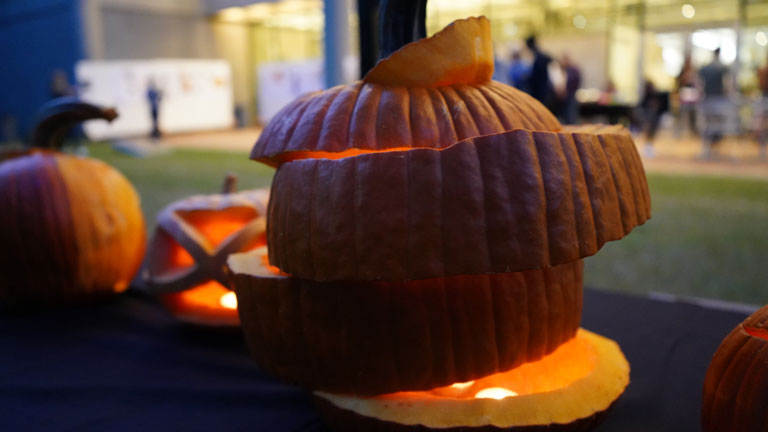
This pumpkin exploration was all about fun festivities with an educational twist. “Part of the learning outcome is traditionally academic, but this project also places a lot of value on building relationships within studios, and I think that really furthers the educational experience,” said David Lynn, one of the lecturers for the first-year studio.
Returning next year for the 5th Annual Pumpkin Ramble, the educational value this tradition offers students will continue to positively impact first-year industrial design students.
“The challenging aspects of pumpkins resembles design sprints. I think this is positive and good practice because it exposes us to project management and delegating and trusting other people. It diversifies our experience with different styles and environments that we will likely experience again in later projects and in the real world,” student Tynan Purdy said.